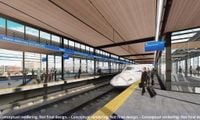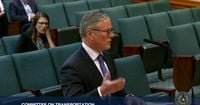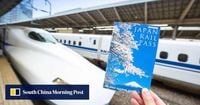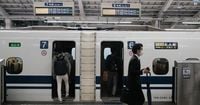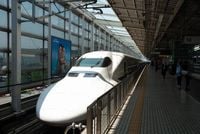The decade-long effort to establish a high-speed rail line between Dallas and Houston has hit a significant roadblock, with Transportation Secretary Sean Duffy announcing the termination of a $63.9 million federal grant intended to support the project. This decision, made on April 15, 2025, has raised concerns about the viability of the Texas Central Railway, a privately funded initiative that has faced numerous challenges since its inception in 2009.
Initially estimated to cost $10 billion, the project aimed to connect the two largest cities in Texas with a train capable of making the journey in just 90 minutes. However, as the years progressed, cost estimates ballooned dramatically. By 2019, projections had risen to $20 billion, and by 2020, they reached $30 billion. A recent analysis by Baruch Feigenbaum from the Reason Foundation now estimates the total cost of construction and operation could exceed $41.6 billion.
Duffy's remarks were pointed: he described the Texas Central Railway as "a waste of taxpayer funds," reflecting a broader skepticism from the Trump administration towards large-scale public transportation projects. This skepticism was echoed by U.S. Rep. Jake Ellzey, who praised the decision to withdraw federal support, emphasizing a commitment to preventing misuse of taxpayer resources.
The Texas Central Railway project was originally conceived as a fully private venture, yet it has struggled to secure adequate funding and land necessary for construction. Despite having acquired about 25% of the required land as of January 2025, the project has yet to lay a single foot of track or obtain the necessary permits from the federal Surface Transportation Board.
In a recent hearing before the Texas House of Representatives' Transportation Committee, Texas Central's representative Andy Jent expressed optimism about the project's future. He stated, "We agree with Secretary Duffy that this project should be led by the private sector, and we will be proud to take it forward." Jent also indicated that the company plans to continue pursuing federal permits and financing, anticipating a timeline of approximately six months for planning and another 80 to 86 months for construction.
The project has faced opposition from various quarters, including from Texas lawmakers. In 2017, the legislature passed a law prohibiting the allocation of state funds for high-speed rail projects operated by private entities. Furthermore, state Rep. Brian Harrison has introduced legislation aimed at preventing private entities from using eminent domain for high-speed rail construction.
Despite these hurdles, the new controlling interest in Texas Central, led by Fort Worth businessman John Kleinheinz, remains steadfast in its commitment to moving forward. Kleinheinz, who acquired the project from Japanese investors earlier this year, believes that the Trump administration's withdrawal of federal support could ultimately be beneficial. He stated, "Amtrak has been trying to get control of our deal, and it would have been terrible for Texas. I believe the Trump administration is interested in this deal if it comes from the private sector."
In a related development, the North Central Texas Council of Governments has indicated that the recent changes at Texas Central, including the loss of federal funding, will not immediately affect plans to advance a shorter high-speed rail route between Dallas and Fort Worth. Transportation director Michael Morris emphasized the importance of a high-speed rail line in accommodating the projected population growth in the region over the next two decades.
The Texas Central Railway project has been characterized by delays, legal challenges, and shifting leadership. It aims to utilize Japanese Shinkansen technology, which has been successful in Japan but has faced skepticism in the U.S. context. Kazuto Suzuki, a professor at Tokyo University, noted that the perception of high-speed rail as a "liberal idea" may have influenced the current administration's stance on the project.
As the project stands, the timeline for completion remains uncertain. Jent has stated that while they are not ready to announce a definitive start date, they are optimistic about securing the necessary financing and permits by the end of this year. If successful, construction could begin, but the substantial cost and regulatory hurdles continue to loom large.
In summary, the future of the Texas Central Railway hangs in the balance as stakeholders navigate the complexities of funding, regulatory approvals, and political opposition. With the Trump administration's recent actions signaling a shift towards private investment in infrastructure projects, the path forward for high-speed rail in Texas remains fraught with challenges.
